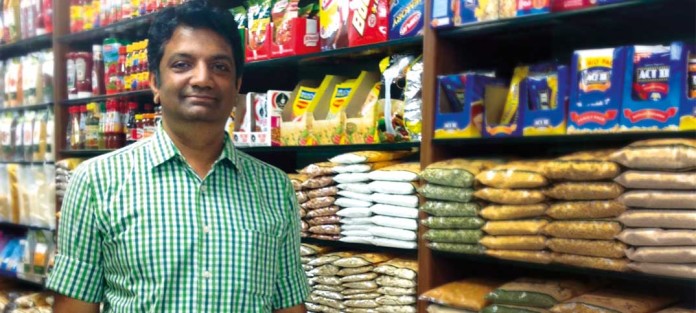Nick Shanagher reports on the lessons the UK can learn from Indian retail supply chains.
India is more like the European Union than a single country when it comes to its retail supply chains, particularly groceries. It is a country with 29 states where considerable amounts of food are wasted because of supply chain inefficiency.
But even as businesses grapple with this, they are also being disrupted by the internet and the idea of ‘omnichannel sales’: that bricks and mortar retailers need to sell online as well.
Speakers at the Retailers Association of India conference this year included Chris Biggs, a former Tesco.com executive now with the Boston Consulting Group. In the UK, he says, Tesco moved first and as a result, won many of its competitors’ best customers. It was expensive for competitors to catch up.
But to move first, you need to have a well-functioning business.
Previously the head of Walmart’s wholesale operations in India, Craig Wimsatt is the chief operating officer of Bharti Retail, which has a portfolio of 212 Easy Day neighbourhood stores and hypermarkets in 11 states. He says retailers need to make decisions based on which customers they were serving.
“We have a lot of work to do to get the basics right and we need to stay focused on the customer,” he said.
Biggs argued that there is a kind of ‘prisoner’s dilemma’ at play: if you stand back, your competitor wins; if you all take part, you all lose because there is not enough profit in the channel.
Pure digital players in India are making many mistakes. Retailers complain that they can only keep going because investors in the US are funding them.
However, Biggs says the business model has been proven. “It is easy to think in the early days that you won’t make a profit. However, 30% of John Lewis’ sales are made online or come through ‘e-influence’: for example, 80% of washing machine buyers start online. You reach purchasers online.”
Wimsatt agrees: “Retailers are constantly evolving. Digital gives us a lot of new ways to sell stuff. It’s an enabler.”
Biggs says there are five steps to online. You start with purely digital products; then you have commodity products; then you have marketplaces in which other retailers take part; everything else then goes online; and you end up with the ‘internet of things’ “where your fridge talks to your smartphone and orders your shopping”.
One challenge for grocery, he says, is that they have spent many years mastering how to get the presentation of their products exactly right on-shelf. Now they have to learn how to get the product on a smartphone screen.
It is a big step up. Anil Rajpal of Tata Consultancy Services says supply chains make or break retailers. For the supply chain in India, there are four imperatives, he says: never being out of stock; timely delivery; synchronising across channels; and customer service.
But India struggles because its infrastructure and systems are antiquated. Most businesses still communicate informally using paper and phone rather than electronically. As a result, communication with suppliers needs improvement. In the food and grocery channel, suppliers simply fail to properly aggregate demand information.
“The fresh category is one of the most difficult and the most profitable. It requires retailers to take pride in the category and to bring in skilled expertise,” says K Radhakrishnan, a co-founder of online store grocermax.com.
“There is no international retailer who does not try to be best in this area. But more than in any other category, Indian retailers have been slow learners here.”
Clearly, the UK supply chain is ahead in terms of its systems and processes. But even so, it is likely to be just as vulnerable to the changes being driven by consumers’ use of social media and smartphones.








